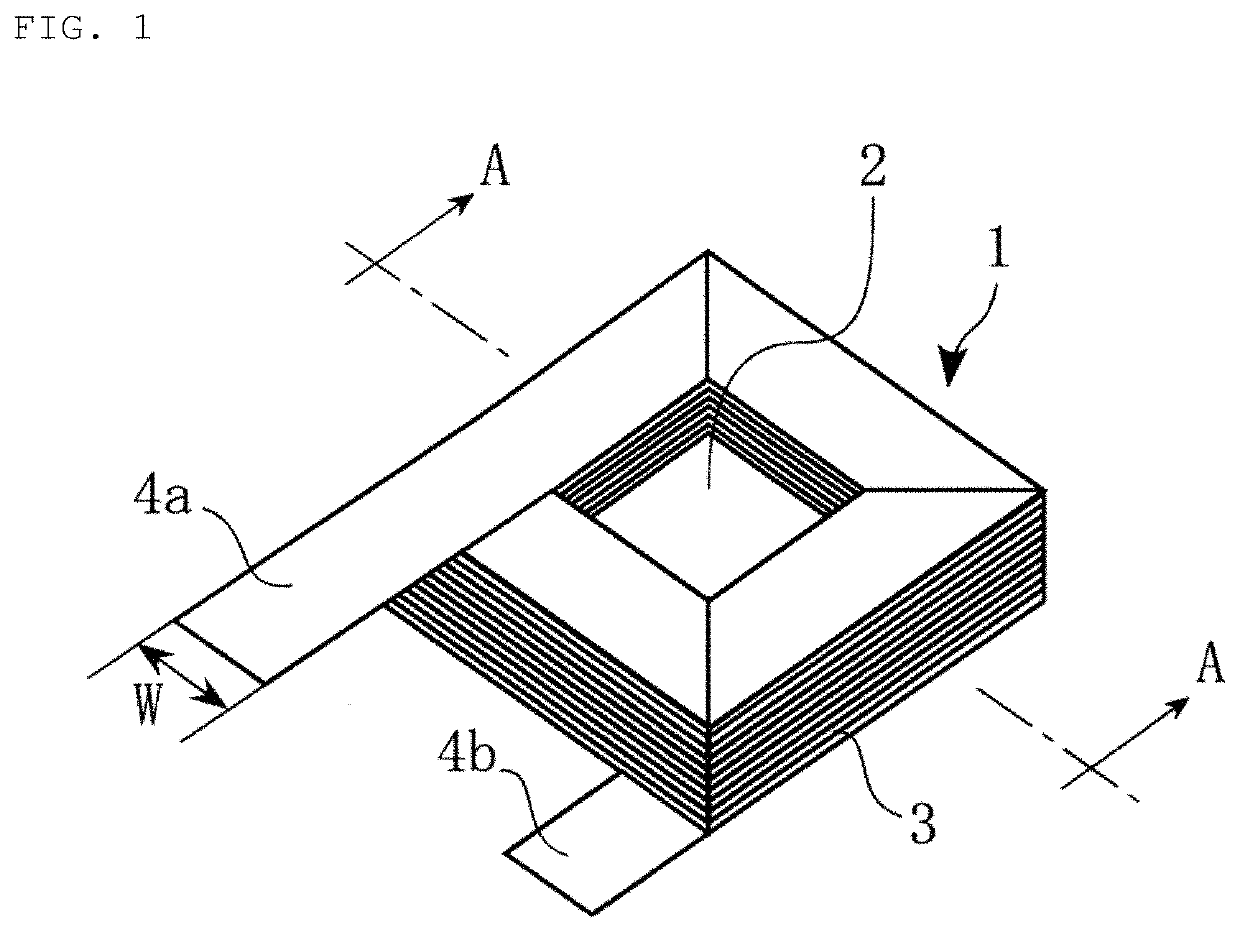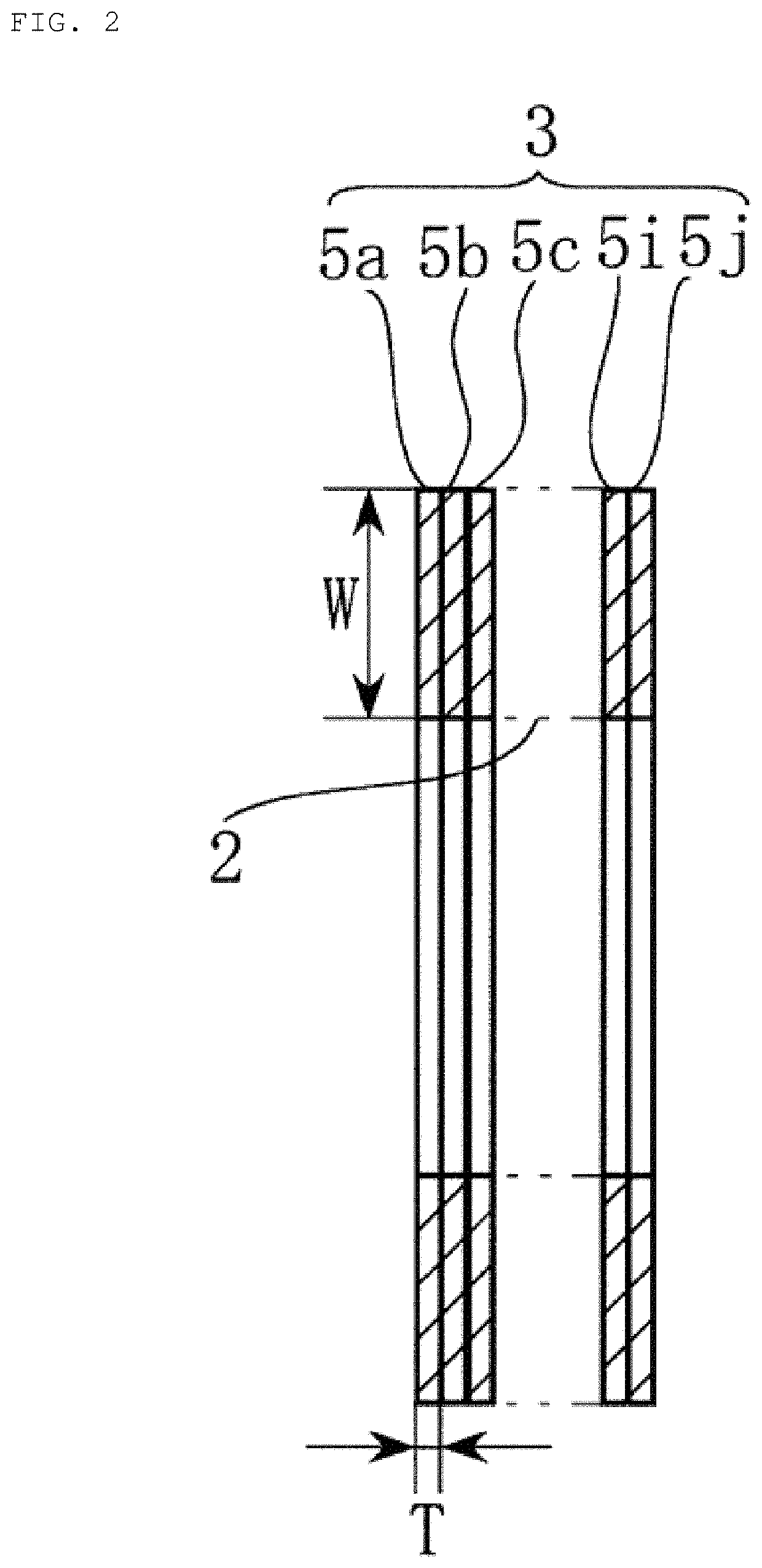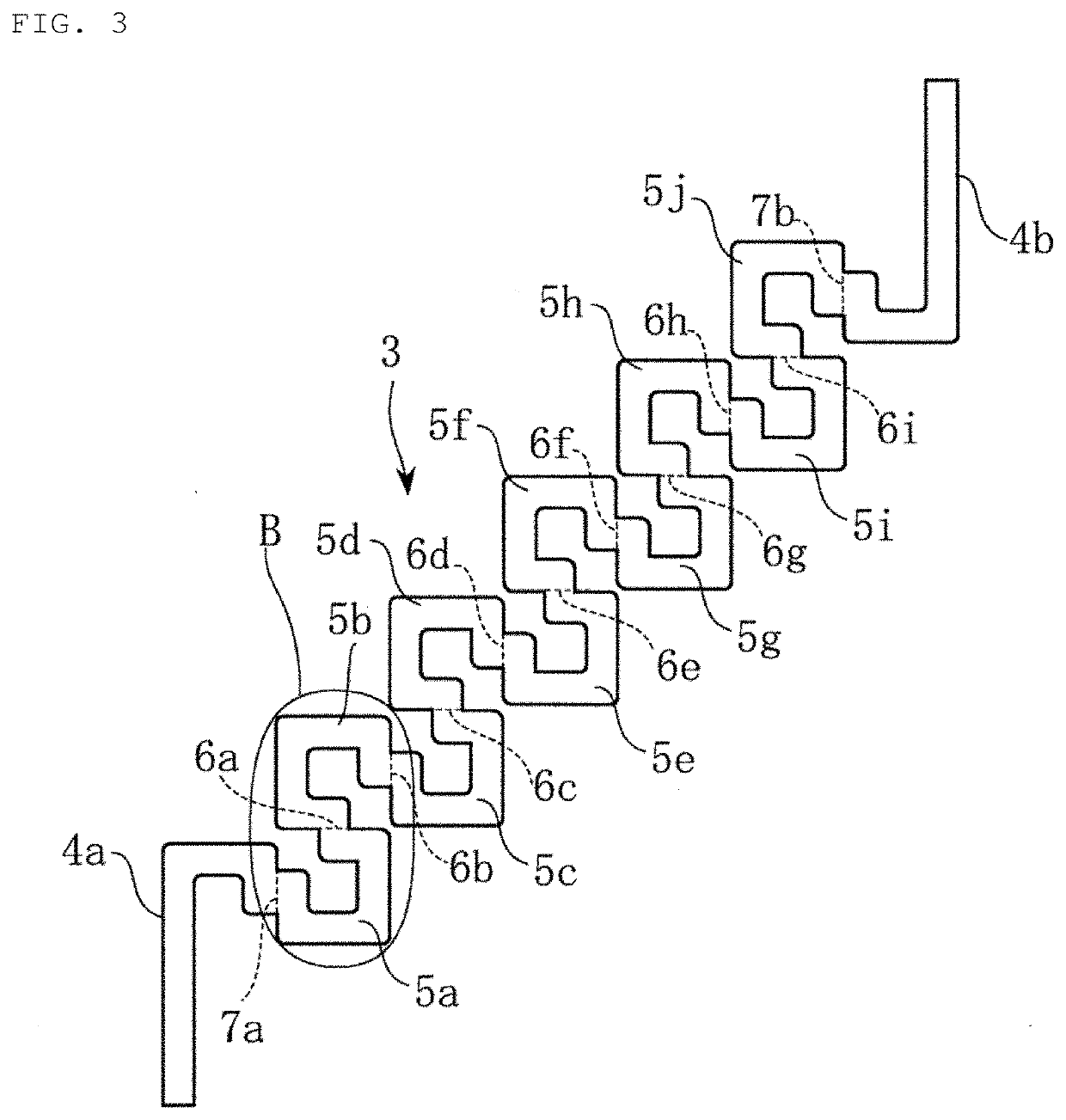Winding body and method for manufacturing winding body, and coil component
a winding body and winding technology, which is applied in the manufacture of coils, transformer/inductance details, electrical devices, etc., can solve the problems of short circuit, short circuit, and parts of conductors, and achieve the effect of suppressing short circuit in winding, reducing compressive stress, and suppressing protruding parts
- Summary
- Abstract
- Description
- Claims
- Application Information
AI Technical Summary
Benefits of technology
Problems solved by technology
Method used
Image
Examples
example 1
[0134]A Cu thin band with a thickness of 0.3 mm and a width of 10 mm was prepared, and an example sample and a comparative example sample were produced for confirming the workability.
[0135](Example Sample)
[0136]FIGS. 13 to 15 are images obtained with an optical microscope, showing a procedure of the fold processing for the Cu thin band of the example sample in which a cutout portion was formed.
[0137]First, as shown in FIG. 13, a folding site 52 of a Cu thin band 51 was etched, and a U-shaped cutout portion 53 was formed. The depth Dt of the cutout portion 53 was about 3 / 4 the thickness T of the Cu thin band 51 (about 0.23 mm).
[0138]Next, as shown in FIG. 14, the Cu thin band 51 was folded at the folding site 52 in an overlapping manner, and was further folded, so that the cutout portion 53 was formed into a hollow recessed portion 54 as shown in FIG. 15. An inside part of the folding site 52 was stowed in the recessed portion 54 without protruding to the outside of the Cu thin band ...
example 2
[0150]Magnetic field analysis software is used to simulate a relationship between a Cu thin band (continuous thin band) and a conductor loss for Cu thin bands having thicknesses T of 0.2 mm, 0.33 mm, and 0.5 mm, respectively, when the Cu thin bands are energized with an alternating current having an effective value of 28 A (peak-peak value: 80 A) under a condition that a driving frequency f of a coil component is 200 kHz.
[0151]FIG. 24 shows, as a result of the simulation, the relationship between the thickness of the Cu thin band and the conductor loss. In the figure, the horizontal axis is the thickness (mm) of the Cu thin band, and the vertical axis is the conductor loss (W).
[0152]As is clear from FIG. 24, the conductor loss sharply decreases when the thickness of the Cu thin band is 0.3 mm or less.
[0153]Meanwhile, the skin depth d of the Cu thin band can be calculated by the mathematical formula (1) discussed above.
[0154]Since the electrical resistivity p of Cu is 1.68×10−8 Ω·m a...
PUM
| Property | Measurement | Unit |
|---|---|---|
| depth | aaaaa | aaaaa |
| thickness | aaaaa | aaaaa |
| skin depth | aaaaa | aaaaa |
Abstract
Description
Claims
Application Information
 Login to View More
Login to View More - R&D
- Intellectual Property
- Life Sciences
- Materials
- Tech Scout
- Unparalleled Data Quality
- Higher Quality Content
- 60% Fewer Hallucinations
Browse by: Latest US Patents, China's latest patents, Technical Efficacy Thesaurus, Application Domain, Technology Topic, Popular Technical Reports.
© 2025 PatSnap. All rights reserved.Legal|Privacy policy|Modern Slavery Act Transparency Statement|Sitemap|About US| Contact US: help@patsnap.com



